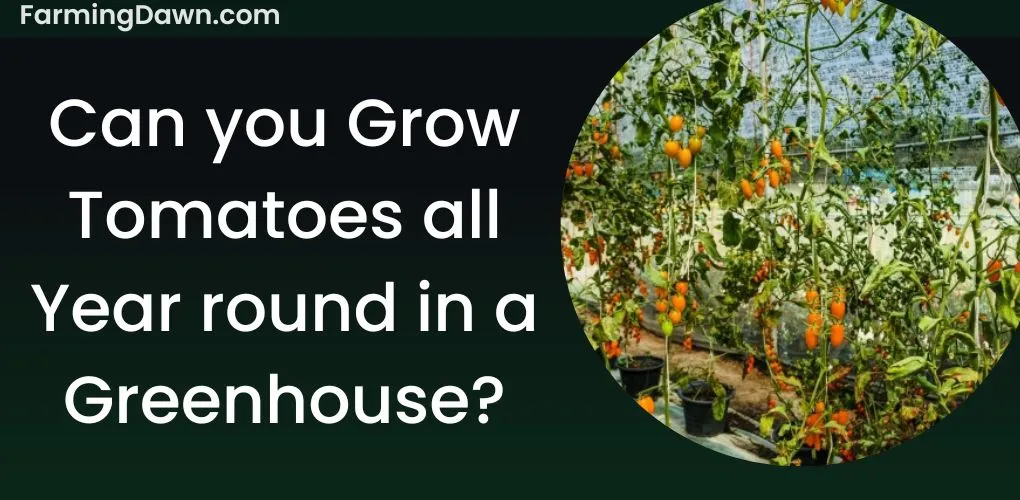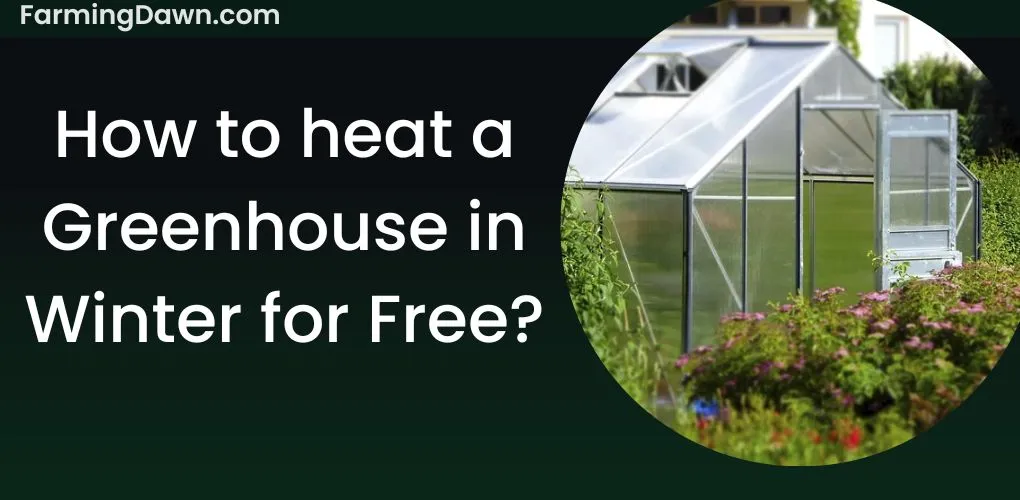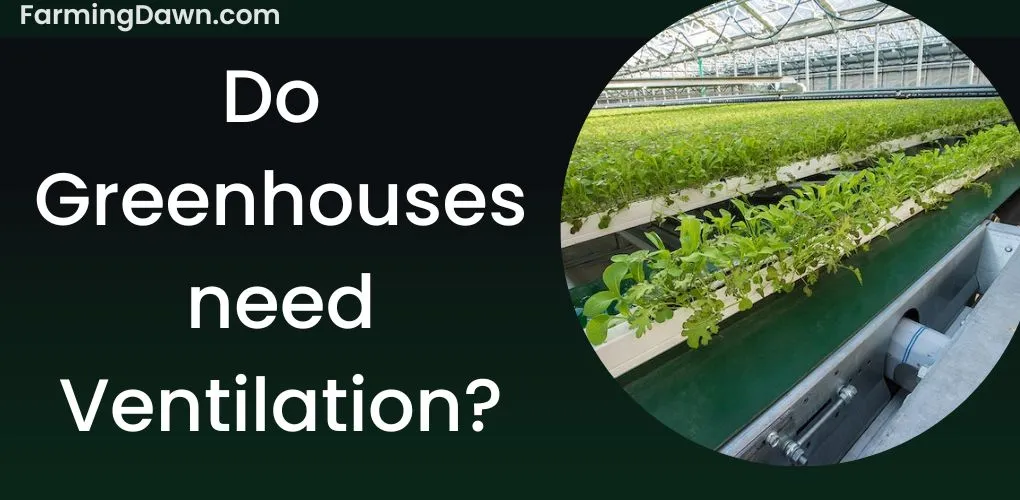I’ve been around farming for a while, so I’ve seen my fair share of greenhouse arrangements. Polycarbonate is one material that has gained popularity in recent times, and for a good reason. The advantages of this lightweight, impact-resistant plastic greenhouse are numerous. However, there are some problems with polycarbonate greenhouses, just like anything in life.
So, today I will discuss some of the difficulties you might face when using a polycarbonate greenhouse, as well as some advice on overcoming them.
The Problems with Polycarbonate Greenhouses
Here I will list all 5 problems with polycarbonate greenhouses. After that, I will discuss them one by one:
- Durability issues
- Insulation issues
- Cost issues
- Dust Accumulation
- Algae Development
Durability issues
Due to the material’s relative softness, polycarbonate is prone to scratches. This can be an issue for greenhouse owners because scratches can damage the structural integrity of the panels and shorten their lifespan. Furthermore, scratches may leave spaces where moisture might sneak through and cause mold growth or other problems.
UV-induced deterioration is the second issue with polycarbonate greenhouses. With time, UV radiation from the sun can degrade polycarbonate, making it brittle and yellowed. Due to this, the greenhouse may not only lose some of its aesthetic appeals but may also become more vulnerable to wind, hail, and other weather-related damage.
Finally, polycarbonate greenhouses are notorious for being vulnerable to severe snow loads. A greenhouse’s roof may become snow-covered, weighing heavily on the panels. Polycarbonate panels, less durable than glass or other materials, may split or break at this weight. This could pose a major threat to greenhouse owners’ and their plants’ safety.
Insulation issues
One of the most significant problems with polycarbonate greenhouses is their inability to retain heat in colder climates. In cold temperatures, polycarbonate greenhouses lose heat, while heat is not blocked by polycarbonate, but it does permit light.
As a result, your greenhouse will require more heat if you live in a lower area. The greenhouse can be heated with electric blankets and space heaters, whereas you can also sandwich foam insulation or bubble wrap between polycarbonate panels to maintain heat.
Poor ventilation is another issue, and because of this, condensation and humidity can occur in polycarbonate greenhouses with insufficient airflow. This can be a real problem because mold and other ailments can be brought on by excessive moisture and can lead to root rot.
Your greenhouse needs appropriate ventilation to resolve this. Add vents or fans with adjustable openings.
Cost concerns
One potential cost problems with polycarbonate greenhouses is the need for panel replacement. Polycarbonate panels’ performance may be impacted by scratches or fading over time. In some circumstances, significant snow loads or other environmental variables may also cause damage to panels.
Nonetheless, polycarbonate panels can survive a long time with the right upkeep and care. It is true that greenhouses made of polycarbonate can cost more upfront than those made of glass or plastic film. However, it’s essential to consider the long-term benefits of polycarbonate.
Polycarbonate is less prone to break in severe weather than glass since it is shatter-resistant. When weighing the costs and benefits of a polycarbonate greenhouse, it’s critical to take your requirements and financial situation into account.
Dust Accumulation
Dust can sneak in between polycarbonate panels of the greenhouse and reduce the amount of sunlight that reaches the plants, leading to stunted growth and poor yields. It’s difficult to get rid of it, and if you put it off for too long, the result will be a foggy, nasty mass that obstructs the sun’s rays.
Dust or debris can scrape the surface of your beloved polycarbonate greenhouse. And that’s not what we want, do we? Fortunately, there are a few simple fixes for these issues. Regular cleaning of polycarbonate greenhouse panels with a soft brush or sponge and mild detergent is necessary to avoid dust buildup.
You can also use strong tape to close the panel ends or go fancy and use a U channel to cap them off.
Algae Development
Algae growth is one of the main problems with polycarbonate greenhouses. On the interior of the greenhouse panels, algae development can happen and lead to a number of problems.
Like dust buildup can prevent sunlight from entering polycarbonate greenhouses, algae growth can also inhibit plant growth and productivity. Additionally, it can make the greenhouse look unsightly and difficult to clean.
To prevent algae growth in polycarbonate greenhouses, Proper upkeep and cleaning are essential. Algae can be avoided by routinely cleaning greenhouse panels with a soft brush and a light detergent solution.
Solutions to the Problems with Polycarbonate greenhouses
As we previously discussed, prolonged exposure to the sun’s UV radiation can make the plastic brittle, weak, and yellow. To combat this issue, some greenhouse manufacturers offer polycarbonate sheets with unique UV-resistant coatings or treatments.
These coatings can help your greenhouse last longer and shield it from sun damage. To further increase sun protection, you can also use shade cloth or other materials.
Reinforcement Techniques to Increase Durability
There are a number of strengthening options you may utilize to increase the toughness of your greenhouse. one approach is to use thicker, more damage-resistant polycarbonate sheets. Another choice is to strengthen the structure with additional bracing or supports. For instance, you may employ trusses to reinforce the roof or cross braces between the walls.
Extra Strategies for Insulation and Ventilation
The greenhouse may become overheated in warmer weather, which could cause wilting and other problems. When it’s chilly outside, the greenhouse may get too cold, which could restrict plant development or even cause plant death.
It’s crucial to take additional insulation and ventilation measures into account to overcome these problems. This can involve insulating the walls or roof, installing fans or vents to move the air around, and controlling the temperature using heating or cooling systems.
Polycarbonate vs Plastic greenhouse
Advantages of Polycarbonate Greenhouse |
Advantages of Plastic Greenhouse |
| Polycarbonate greenhouses can survive for many years without needing repairs or replacement because they are considerably tougher and more resilient than plastic greenhouses | Plastic greenhouses are significantly less expensive, increasing their availability to a broader range of farmers and gardeners. |
| They also provide better insulation, allowing plants to flourish year-round, especially in colder locations. | They are far lighter and simpler to install, making them for ideal for DIY Enthusiasts and professionals. |
| Polycarbonate panels provide more light transmission than plastic, resulting in faster and healthier plant growth. | They can survive for many years without needing to be replaced because they are less prone to dents and fading. |
Polycarbonate and plastic greenhouses have certain drawbacks in addition to their many benefits.
Disadvantages of Polycarbonate Greenhouse |
Disadvantages of Plastic Greenhouse |
| First of all, they cost more than plastic greenhouses, which may prevent small-scale farmers and gardeners from using them. | First off, they may need to be replaced more regularly because they are less resilient than polycarbonate greenhouses. |
| Second, they can be challenging for DIY enthusiasts to install because they are heavier and more complicated. | Second, they provide inadequate insulation, which could make it difficult for plants to grow in colder climes. |
| Finally, they have a shorter lifespan because they are more prone to scratches and fading over time. | Last but not least, they permit less light transmission than polycarbonate, which can inhibit plant development. |
Polycarbonate vs Glass greenhouse
Advantages of Polycarbonate Greenhouse |
Advantages of Glass Greenhouse |
| Durability: Polycarbonate is a very resilient and long-lasting material, making it a fantastic option for anyone who lives in the wind- or hail-prone locations. | Transmission of light: Glass is a great medium for light transmission, which can enhance plant growth and productivity. |
| Lightweight: Polycarbonate is substantially less heavy than glass, making installation and maintenance easier. | Attractive: Glass has a timeless and traditional aesthetic that many people find attractive. |
| Safety: Polycarbonate is shatterproof, unlike glass, making it a safer material for families with kids and pets. | Resilient: Glass is far more scratch-resistant than polycarbonate, which might help it keep its attractiveness over time. |
Disadvantages of Polycarbonate Greenhouse |
Disadvantages of Glass Greenhouse |
| Light transmission: Polycarbonate may not transfer light as well as glass, which may have an impact on the productivity and growth of plants. | Fragility: Compared to polycarbonate, glass is far more brittle, making it more likely to break, especially in strong winds or hailstorms. |
| Scratching: Polycarbonate is more prone to scratching than glass, which over time, may have an impact on its appearance. | Insulation: Glass does not insulate as effectively as polycarbonate. Thus, it could be harder to keep the temperature within your greenhouse constant. |
| Weight: Glass is significantly heavier than polycarbonate, which might make installation and maintenance more challenging. |
How long does Polycarbonate sheet last?
Polycarbonate sheets are a popular roofing and glazing material known for their durability and strength. Polycarbonate sheets’ durability depends on a number of variables, including the material’s quality, the atmosphere, and the installation process.
When installed and maintained properly, polycarbonate sheets can last up to 20 years on average. These sheets last longer and are more resistant to weather and UV light damage than other roofing materials like metal or asphalt.
Impact resistance is one of the key benefits of employing polycarbonate sheets. They can survive strong winds, hail, and snow without breaking or cracking since they are essentially impenetrable. Polycarbonate sheets are lightweight, making them simple to carry and install.
There are some downsides to take into account, though. Polycarbonate sheets can emit poisonous vapors when exposed to high temperatures and are not fire-resistant. They are much less heat resistant as well than other materials, which could eventually lead them to deform.
Are polycarbonate greenhouses any good?
On the one hand, polycarbonates are known for their tougher and more resilient nature. They are appropriate for both small- and large-scale gardening projects because they are available in a variety of sizes and shapes.
Nonetheless, some people contend that polycarbonate greenhouses lack the aesthetic appeal of glass or other materials. Also, they contend that the material may deteriorate with time and let less light reach the plants.
Ultimately, the choice to utilize a polycarbonate greenhouse will be based on the particular requirements of the farmer or gardener. While some might consider polycarbonate’s strength and adaptability to be significant advantages, others could choose a more conventional or visually pleasing material for their greenhouse.
Conclusion
In conclusion, from heat management to structural integrity, these issues can impact the health of your plants and the longevity of your greenhouse. By being aware of the problems with polycarbonate greenhouses and taking steps to mitigate them, you can still enjoy all the advantages of a polycarbonate greenhouse.
If you have any additional queries related to polycarbonate disadvantages, ask me in the comments. Thank you!
Each greenhouse has its pros and cons. Read my other articles to learn more:





